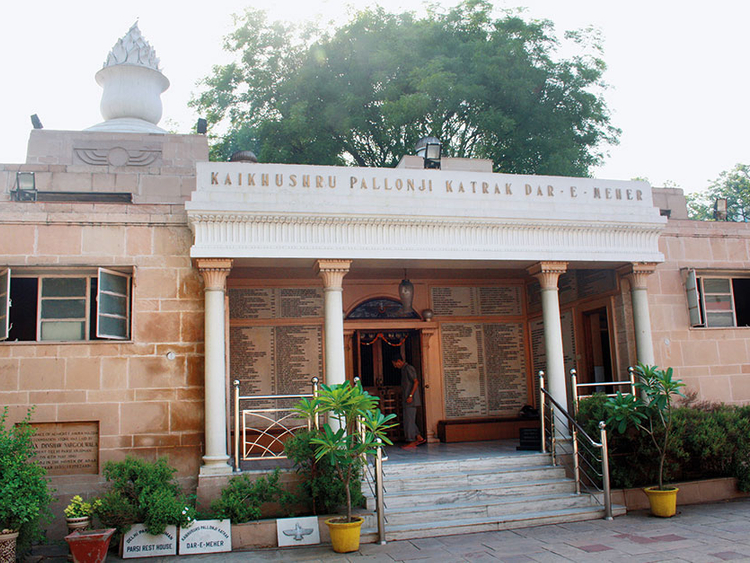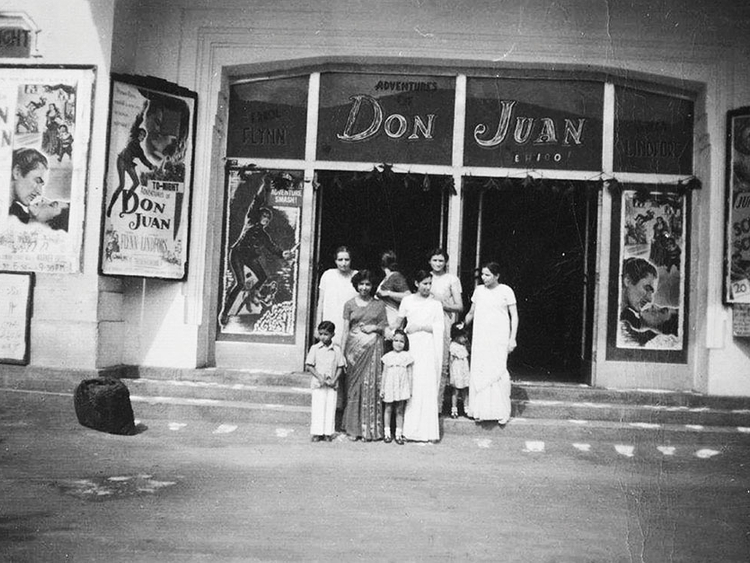
New Delhi: Even though Parsi characters have been regaling the audience with their sense of humour and unconventional roles in Bollywood movies, in Delhi, they are the smallest minority community. The 2011 census report claimed the number of Parsis in Delhi was just about 235.
Ironically, when Lord Irwin inaugurated New Delhi, the new capital of British India, in 1931, Parsis were the first occupiers of shops in Connaught Place, the iconic circular shopping centre.
Rusi Sorabji, now residing in California, United States, says: “A number of Parsis moved from Old Delhi to the grand and high pillared commercial complex, which had residential flats on the first floor and shops on the ground floor. Within the next five to seven years, Connaught Place had the highest concentration of the community at one address, making it a mini Parsi colony of sorts.”
While at one point their number crossed 1,100, before dwindling to a couple of hundreds, presently, they are less than 1,000 in Delhi and the National Capital Region (NCR).
Yezad Kapadia, a resident of Gurgaon, says: “Presently, NCR has about 750 Parsis. But with more than four times the number of deaths occurring every month than the number of births, it is difficult to see how we, as a community, can survive for long.” Kapadia came to Delhi from Jamshedpur (in Jharkhand) 30 years ago and on retirement in 1995, bought a house in Gurgaon and has since lived there.
The community’s dwindling numbers over the decades has been a great cause of concern among those campaigning to preserve their cultural heritage and collective identity.
Dr Shernaz Cama admits, “Yes, we are becoming demographically extinct and in 1999, Unesco requested me to start the Parzor Project to record our heritage and culture.”
According to Parzor: “A 2011 study, conducted by Zubin Shroff, then a doctoral candidate, and Marcia Castro, professor, both at the Harvard School of Public Health, found that the main factor behind the sharp fall in Parsi numbers was the abysmally low fertility. And that fertility in the community had been declining for more than a century. Studies attributed the drop in fertility rates to social reasons. Many Parsi adults do not get married, and for those who do, their average age is 27 years for women and 32 years for men. Therefore, the average child bearing age is also higher than that of the general population.”
Dr Cama, who also heads the Government of India, Ministry of Minority Affairs Jiyo Parsi Programme since 2013, informs, “This (programme) is an attempt through medical intervention and advocacy to turn the tide of demographic decline. So far, in the past three years, we have added 101 babies to our population. Considering that only 200 babies are born to the Parsis each year, this is a good movement forward in percentage terms,” she adds.
Over the years, many members of the Parsi community have come to Delhi on work assignments and left. But, perhaps, 82-year-old Dhun Darius Bagli, is one of the oldest for whom the city has been home for several decades. Till recently, she had been running the Mengusi Parsi Dharamshala, owned and maintained by the Delhi Parsi Anjuman (DPA). Initiated by her husband Darius Erach Bagli in 1950, she took over the functioning of the dharamshala (guesthouse) after his death in 1979.
In her own unique attempt to keep the Parsi culture alive, Bagli started a kitchen to introduce Parsi food to non-Parsis, many of whom have now become regulars at the place.
The DPA, located on Bahadur Shah Zafar Marg, is a sprawling complex that has a Fire Temple, also referred to as Kaikhushru Palonji Katrak Dar-e-Meher — the only one of its kind in Delhi. The entrance to the Fire Temple displays the Farohar symbol (a feather-robed archer — one of the most popular symbols of Zoroastrianism).
While it is not very clear if Delhi ever had The Parsi Tower of Silence where they put their dead bodies for vultures to devour them, Sorabji says, “Delhi Parsis have been using the burial system since 1800s. The cemetery inside the DPA complex has graves dating to the late 19th century. But since the cemetery is now shut the Parsis have an alternate burial ground near Khan Market for over 50 years.”
According to historians, Zoroastrianism, the religion of the Parsis originated about 3,500 years ago in Persia (Iran). Followers of Zarathushtra of Iran, the Parsi — Zoroastrians have come to be one of the distinct threads in the tapestry of multicultural India.
Zarathushtra is believed to have lived in the Bronze Age in Central Asia, the ancient land known as Airyana Vaeja between 1,700BC and 1,500BC when the Stone Age in Iran gave way to the Bronze Age. Though there is much controversy regarding these dates, linguistic evidence from the Gathas — 17 Hymns, the only text attributed directly to Zarathushtra, confirms close parallels with the early Rig Veda, now believed to be composed from about 1,800BC.
About their advent in North India during the reign of Mughal emperor Akbar, it is said that the Parsi high priest of Navsari, Gujarat, was invited by the Emperor to his court in Fatehpur Sikri in Agra, Uttar Pradesh, and he may have left behind a few of his learnt ‘dastoors’ (priests). But it is very likely that the arrival of adventurous Zoroastrian soldiers and traders pre-existed the advent of the Mughal rule in Delhi.
As Sorabji puts in: “There is evidence to the effect all over Punjab, Kashmir, Afghanistan, Sindh and Baluchistan (the latter two now in Pakistan). Also, there is historical evidence that Persian Jews and Zoroastrian traders and seafarers had settled along India’s Konkan and Malabar coastal areas much before the advent of Christianity and Islam.”
Kapadia divulges another fact, “You need to distinguish between the Parsis, who are by definition those whose father is a Parsi, and Zoroastrians, who are followers of the religion, initiated by Zarathushtra. This implies that every Parsi is a Zoroastrian, but not every Zoroastrian is a Parsi,” he says.
Questioned on how Parsis in Delhi and NCR stay connected with each other, Dr Cama informs, “The DPA meets regularly at the Fire Temple complex. The meetings are held on two special days — Jamshedi Navroze (March 21), which is the first day of spring and on the New Year (in August) following our prayers for our ancestors. Those apart, there are the occasional talks, seminars and other functions that we celebrate.”














